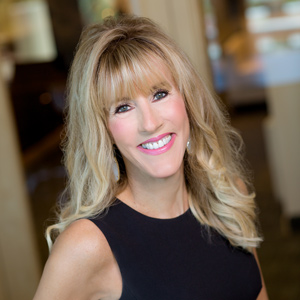
Conversation vs. Convenience

The more virtual friends we have, the lonelier we get. That’s because we’ve traded real conversation for convenience. Just because we can conveniently text someone a few lines or send them an instant message doesn’t mean we’ve actually had a conversation. We’re not making a real, human connection. A conversation happens in real time. We don’t have the opportunity to self-edit because it’s spontaneous and in-the-moment. It’s energized and alive with genuine behavior, actions and reactions. It can be exciting, scary, funny and nurturing all at the same time.
An online interaction is planned. We can parse our words, edit and choose just the right photos to present ourselves as how we’d like others to see us, not necessarily as we are. Online communication is like Photoshopping your entire personality. How many of us have online personas that don’t match who or where we are in life? Is it because it’s easier to pretend we’re the online versions of ourselves rather than make the actual changes to experience that transformation?
“We need real, physical relationships to point out the limitations we carry that hold us back.”
We need real, physical relationships to point out the limitations we carry that hold us back. If we stay locked away in our online ivory towers, we never heal and move forward. Instead, we prefer to “update” people by keeping them at arm’s length through technology, in lieu of having an in-person interaction, to avoid our own pain.

Plugging Into Each Other

If we intend to have lives that are full and rich, it’s time to unplug from technology and plug back into each other. Life is a somatic experience. That’s why we have a physical body. When we have a real conversation with a real human being, we can see his smile, hear his voice, touch his hand and respond to his body language. Our body needs this kind of energetic stimulation to remain healthy. Countless research studies show that people who are in loving partnerships and have deep friendships live longer. In fact, the Institute of HeartMath found that when two people touch each other, the brain energy from the person doing the touching – his electroencephalogram (EEG) – actually reflects in the recipient’s heart energy, or electrocardiogram (ECG). This same energy also feeds our souls with what I like to call spiritual nutrition. “It’s the difference between living a passionate versus a passive life.”
Between humans, there is a real and scientifically measurable energy exchange when we are in each other’s company. Between humans and technology, there is none because the interaction is a passive one. The mystic poet, Rumi, understood this distinction hundreds of years before computers existed. He described passion as when a man could distinguish between the wine and its container. A truly passionate life is one where we tangibly experience its taste and texture, not just get an idea of it.

Relationships Heal

I tell my patients that although our relationships can cause us the most pain in life, they are also the source of our greatest reward. Personal, intimate relationships temper and test us, but they also make us stronger. They ground us energetically in a world that’s made of nothing but energy. It’s the tension put on our bones by the down-pull of gravity that helps us build stronger bones. That’s why astronauts who spend long periods of time in space often suffer osteoporosis. Social network relationships lack gravity. They aren’t grounded in any real biological force offering an energetic give-and-take that fuels our psycho-spiritual growth. Instead, we opt for a cheap substitute and end with a kind of psycho-spiritual osteoporosis. That’s why it’s called “virtual reality”, meaning almost but not exactly reality.
In real life, almost carries no weight. Did you almost fall in love with your spouse, almost birth your children, or almost take a dream vacation? No. What we will take with us from this earth when we pass on are nothing but our experiences. That’s life! Real relationships shape and evolve us because of the grounding energy that’s intrinsic to them. All our relationships, the good and bad, make us stronger and more resilient because of this. It’s our relationships that heal us.
“Real relationships shape and evolve us…”
It requires courage and work; it means putting ourselves back out there and taking a real risk again. Risk and reward are directly proportional; the bigger the risk we take, the bigger the reward. Being grounded from within helps us take risks, heal and move forward. As our hearts heal, our cells respond and we experience better physical health, too! As such, it’s only through establishing relationships with depth, trust and loyalty that we live richer and healthier lives. We can only accomplish that by going out into the real world and finding it…and that’s not virtual reality. It’s an absolute certainty.
|











